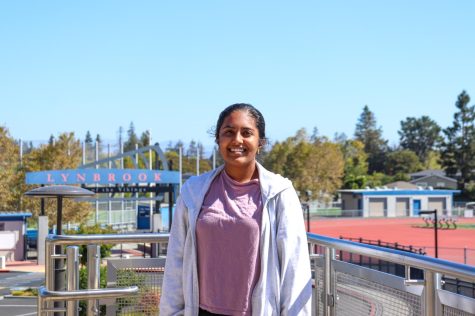ASL education bridges communication
Graphic illustration by Catherine Zhou
Hundreds of thousands of Americans use ASL; as sign language is incorporated into the modern world, it has become increasingly important to learn beginning from childhood.
May 8, 2023
Released in 2022, CODA, a movie featuring the life of a Deaf family, brought Deaf culture to mainstream media, spurring discussions about the importance of American Sign Language. Hundreds of thousands of Americans use ASL; as sign language is incorporated into the modern world, it has become increasingly important to learn beginning from childhood. Schools should incorporate ASL into their curriculums and teach sign language to students from a young age, allowing for better inclusion of Deaf students in the U.S. and teaching others useful communication skills for their future.
ASL has its own grammar rules, as it features a combination of hand, facial and full-body movements such as raising of the eyebrow to ask a question. ASL is entirely distinct from the English language, though it has varying regional accents and dialects as many spoken languages do.
“ASL is a beautiful form of communication, in which you’re taught not only the language but how to act in a Deaf community,” junior Halie Yung said. “Some things that are considered polite in English are actually considered rude in ASL. In English, when you’re interrupting someone talking, you say ‘excuse me.’ But, in ASL that’s actually considered rude and the polite way is to quickly walk between the people having a conversation.”
Deaf education was not introduced in the U.S. until 1814. Thomas Hopkins Gallaudet created the first American school for hard of hearing students in 1817, which sparked the rise of Deaf education across the country and in 1960, ASL was declared to be a genuine language. Many colleges today offer Deaf studies or ASL courses, yet there is currently only one college for the Deaf in the U.S.
While there has been recent legislation proposed to offer ASL as a course in high schools, there still is a lack of education in ASL and Deaf culture. Deaf children fall under the category of handicapped children entitled to a public education rather than enrolling solely in residential schools for the Deaf. However, many schools have little to no Deaf education, creating a divide between hearing and hard-of-hearing students. Many teachers in public schools are not trained to adapt to Deaf students’ needs, making it difficult for these students to participate in classes.
“As we are exposed and educated, we change our attitudes and perspectives,” LHS speech therapist Nicole Tseng. “A class or workshop on ASL would be beneficial to many but it’s just not a common thing.”
Sign language allows Deaf people a detailed mode of communication, facilitating social interactions with their peers. Learning ASL from a young age can have significant benefits, including an increased understanding of body language, better reaction times and heightened reasoning skills. Incorporating ASL into early education would allow hard-of-hearing students to overcome obstacles they may face in social environments and help hearing ones develop empathy.
“Learning ASL brings awareness to the Deaf community because it helps build a bridge between the hearing and Deaf community where you can communicate and understand each other’s stories,” Yung said. “It allows for change, for an easier way for the communities to understand each other better.”
Currently, most public schools in the U.S. do not teach ASL and online courses, such as Duolingo, are one of the primary ways that students learn ASL. ASL should also be prioritized as much as foreign languages are in schools. Elementary schools can implement short ASL classes and schools can provide teachers with training on ASL, they can use ASL when teaching other subjects so students can become accustomed to signing and understanding ASL.
Hearing students learning ASL can help bridge the social gap between hearing and Deaf communities, creating a more inclusive learning and work environment. If adding an official ASL course is not feasible, schools should offer resources for students to learn ASL on their own and students should consider enrolling in online ASL courses.





























































